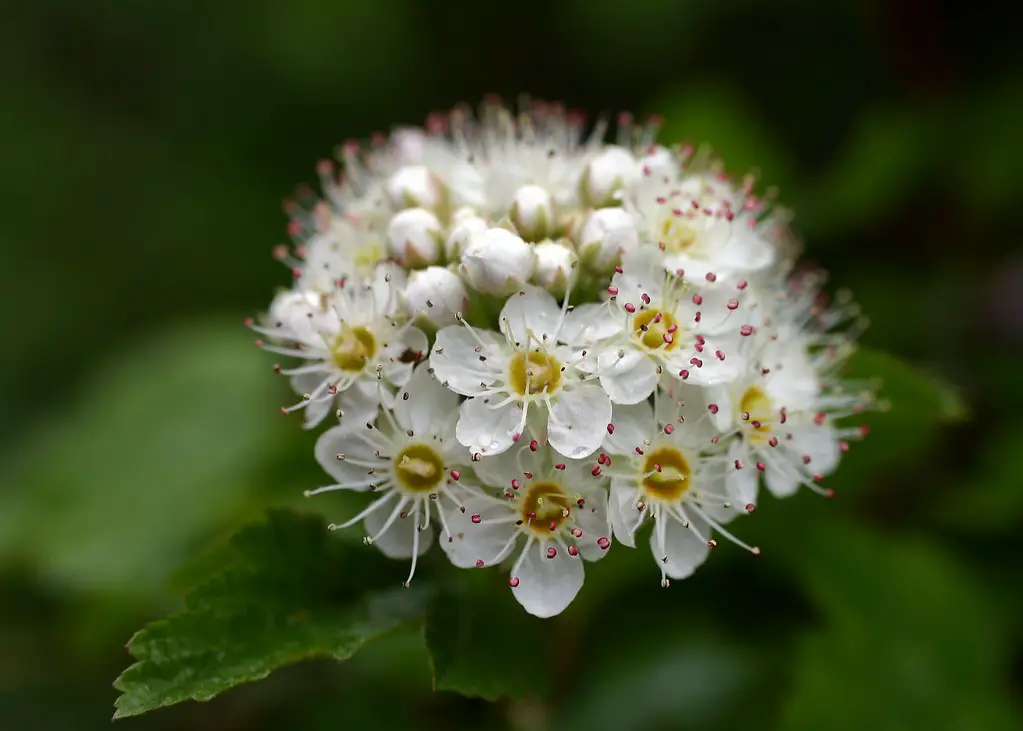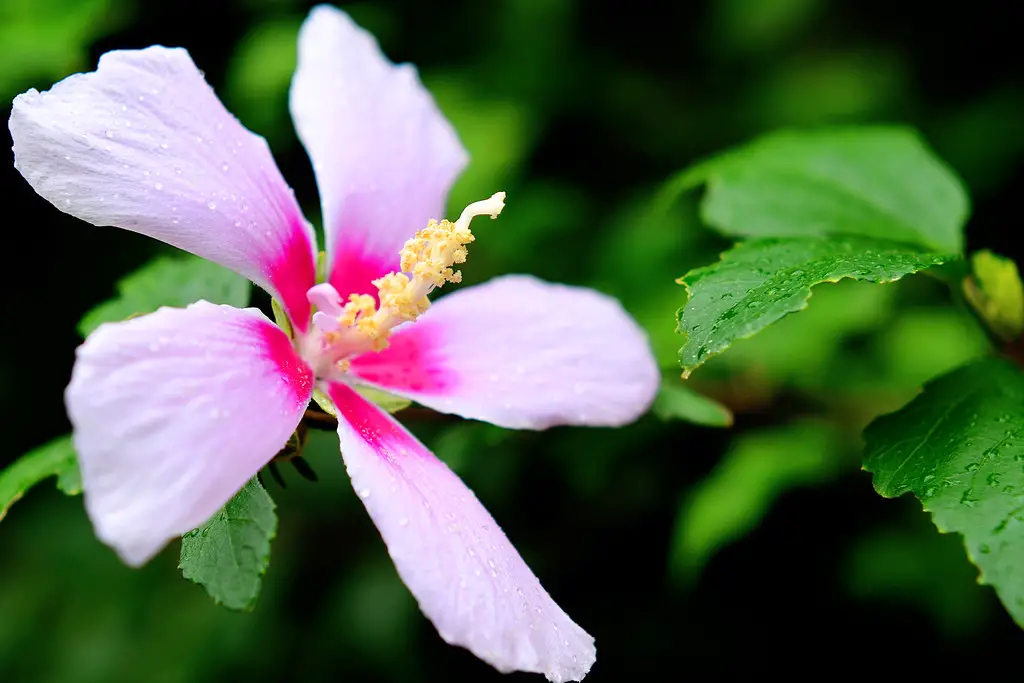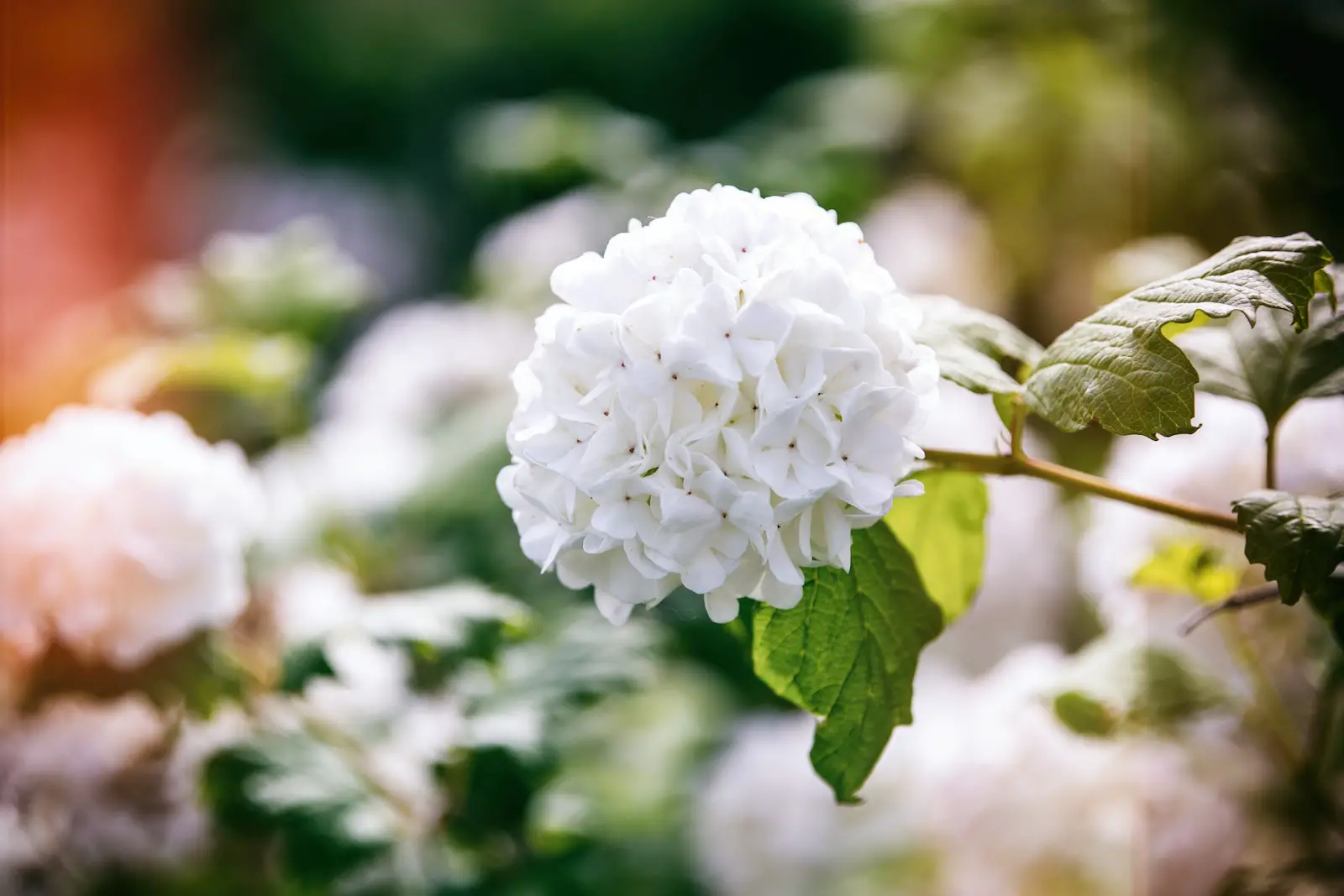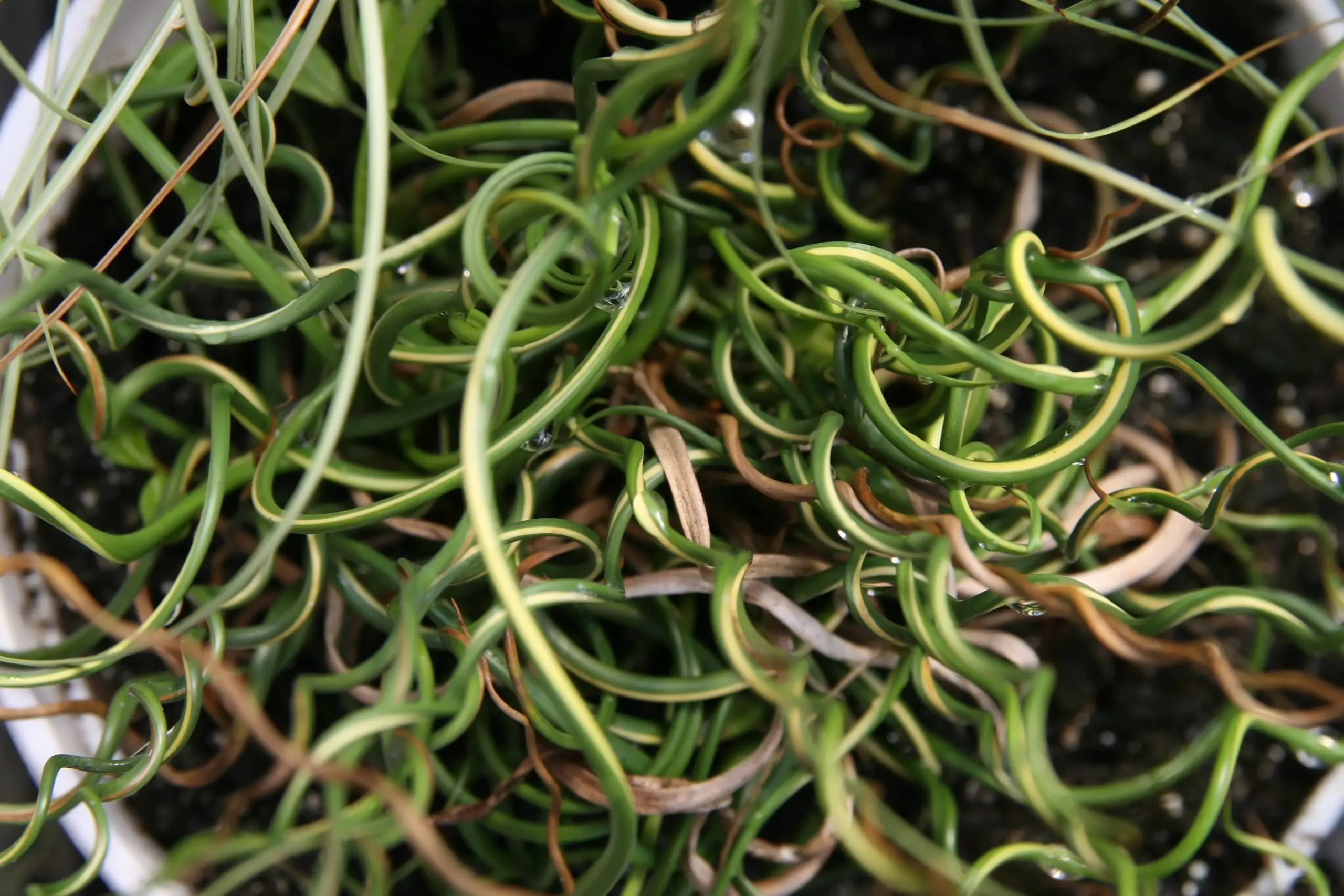Ninebark (Physocarpus opulifolius) is a highly versatile and ornamental shrub, known for its vibrant foliage and attractive bark that peels away in layers, creating a fascinating textured appearance. The shrub’s common name, Ninebark, alludes to this characteristic bark that appears to have nine layers. This deciduous shrub adds year-round interest to landscapes and is a favorite among gardeners seeking low-maintenance and wildlife-friendly plants.
Native to North America, Ninebark has been bred to produce various cultivars with different leaf colors ranging from rich burgundy to bright lime green. Its small clusters of pink or white flowers bloom in late spring or early summer, followed by red seed capsules that add to the ornamental appeal. A hardy plant, Ninebark is tolerant of a wide variety of environmental conditions, making it suitable for various garden settings.
Ninebark’s attributes extend beyond its aesthetic appeal. Its dense and arching branches provide shelter for birds, and its flowers are a valuable nectar source for pollinators. Its robust nature and resistance to many common plant diseases make it an excellent choice for both novice and experienced gardeners.
| Attribute | Details |
|---|---|
| Common Names | Ninebark, Atlantic ninebark, Eastern ninebark |
| Botanical Name | Physocarpus opulifolius |
| Family | Rosaceae |
| Plant Type | Deciduous Shrub |
| Mature Size | 5-10 feet tall, 4-8 feet wide |
| Sun Exposure | Full sun to partial shade |
| Soil Type | Adaptable to various soil types |
| Hardiness Zones | 2-8 |
| Native Area | North America |
Ninebark Care
Ninebark is a relatively easy plant to care for, owing to its adaptability and resilience. It can grow in various soil types, including those that are relatively poor or dry. It’s tolerant of drought once established, and while it prefers full sun to partial shade, it can adapt to a variety of light conditions.
When planting Ninebark, it’s essential to provide ample space for the shrub to grow and spread. This will enable proper air circulation, reducing the risk of diseases. While Ninebark doesn’t require much feeding, a balanced fertilizer can be applied in the early spring to promote robust growth and vibrant foliage.
Light Requirement for Ninebark
Full sun to partial shade is ideal for Ninebark. Although it can tolerate different light conditions, more sun generally results in richer foliage color and more abundant flowering.
Soil Requirements for Ninebark
Ninebark thrives in a wide range of soil types, from sandy to clayey, but well-draining soil is preferred. It can tolerate both acidic and alkaline conditions.
Water Requirements for Ninebark
While young plants need regular watering to establish a healthy root system, mature Ninebark is relatively drought-tolerant. Watering should be consistent but allow the soil to dry slightly between waterings.
Temperature and Humidity
Ninebark is hardy and can tolerate temperatures within USDA zones 2-8. It’s not particularly sensitive to humidity levels and can adapt to various climate conditions.
Fertilizer
A general-purpose garden fertilizer can be applied in early spring if desired. Avoid over-fertilizing, as this may lead to excessive growth at the expense of flowering.
Pruning Ninebark
Pruning is not strictly necessary but can be done to shape the shrub or maintain a particular size. The best time to prune is immediately after flowering.
Propagating Ninebark
Ninebark can be propagated through softwood cuttings taken in late spring or early summer.
How To Grow Ninebark From Seed
Growing Ninebark from seed is possible but less common. Seeds should be stratified for about three months before sowing in well-drained soil.
Common Pests & Plant Diseases
Aphids
Small insects that can be controlled with insecticidal soap or neem oil.
Powdery Mildew
A fungal disease that can be managed by proper spacing and airflow around the plant.
Common Problems With Ninebark
Leggy Growth
Occurs when the plant is grown in too much shade, leading to sparse and elongated growth. Moving to a sunnier location can resolve this issue.
Reduced Flowering
May result from over-fertilizing or pruning at the wrong time. Adjusting these practices can restore healthy flowering.
Pro Tips
- Plant in a location with good air circulation to reduce disease risk.
- Water regularly when the plant is young to establish roots, then reduce as it matures.
- Allow plenty of space for growth; Ninebark can spread quite wide.
- Choose the variety that suits your aesthetic preferences; different cultivars offer various leaf colors and sizes.
- Prune after flowering if shaping or size control is desired.



